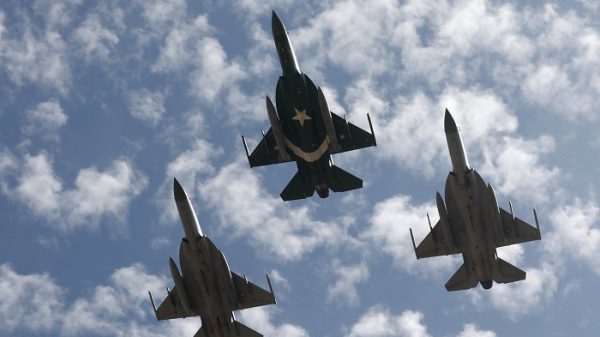PAF workhorse limps on faulty engine

Dr Md Hussain :
The Pakistan Air Force’s workhorse, Chinese designed JF-17 Thunder, is hobbled with defective engines, cutting down its operational life and capability.
The JF-17 “Thunder` is a low cost, light weight, all-weather multirole fighter jointly developed and produced by Pakistan Aeronautical Complex and Chengdu Aircraft Industry Corporation. Each JF-17 costs around $15m-20m. The fighter jet is in fact a progeny of several collaborations China have had in the past, first with the US, then with the Russians. As a result, the airframe is Chinese, the avionics is Western and the aeroengine powering the jet is Russian Klimov RD 93.
When China and Pakistan signed the agreement on joint production of the JF-17 in 1999, it was touted as a combat jet comparable to Su-30MKI, Mig-29 and Mirage-2000.
The reality, Pakistan Air Force (PAF) is finding out much to its chagrin, is nowhere near the boastful claims made by the Chinese. The most serious problem is the aircraft engine which has had a long history of troubles. The single-engine flying the aircraft has experienced repeated failures and poor reliability since its inception.
A large number of engines have developed cracks on engine guide vanes, exhaust nozzle and frame stabiliser.
What has irked the air force officials most is the poor serviceability and maintenance. They have expressed serious concern to the Chinese about the poor quality of service and high cost of repairs.
In fact, the engine problem bedevilling the JF 17 has become more complicated with China finding it difficult to access spare parts and other assistance from Russia due to sanctions. It is reported that China is developing a new engine– Guizhou WS-13 Taishan — to replace the Russian one but it is still to be developed. In all likelihood, China will be more keen on promoting its new engine rather than spending resources on repairing deficient Russian engines.
One of the persistent criticisms levelled against the RD-93 aero engine has been its propensity to emit black smoke which made it an easy target for the enemy pilot. It put the JF 17 pilot at a disadvantage during close aerial combat, the principle reason for the JF !7 induction into the Pakistan Air Force.
The air force also found that the combat aircraft, because of fuel-inefficient engine, had a low loiter time and long-duration combat air patrol (CAP) missions. This is one of the reasons why the air force has been thinking of replacing the engine with the new FADEC RD-33MK engine. No decision has been taken in this regard.
Thus, JF 17 squadrons, with their high rate of unserviceability, recurring snags in the engine and poor spares supply, have become more of a liability for the Pakistan Air Force, faced with a far superior Indian Air Force.
The writer is an alumnus of JNU, New Delhi. Can be contacted on hussainjnu@gmail.com.





























Leave a Reply